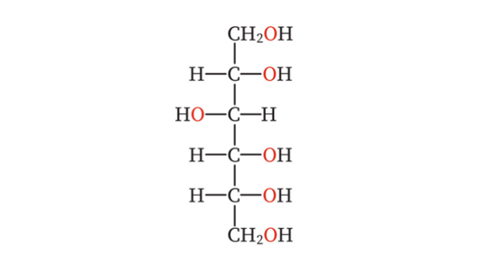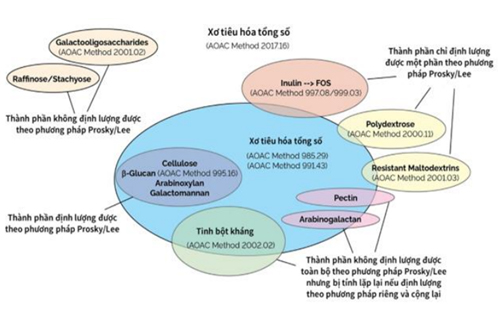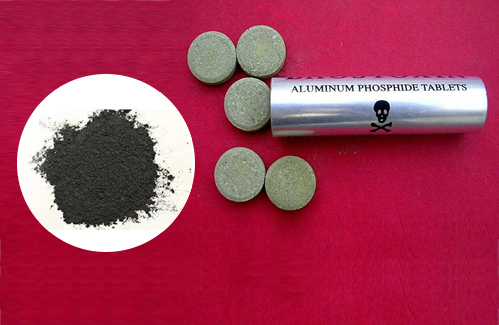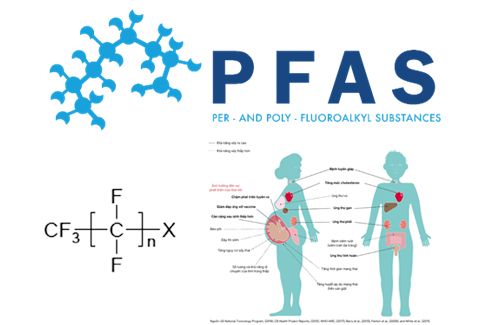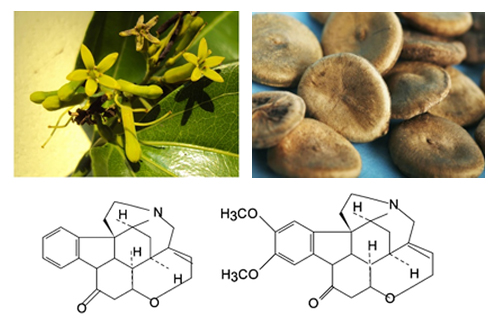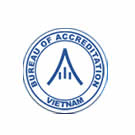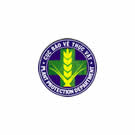- Folder Technical News
- Views 3281
- Last Updated 09/07/2024
Histamine is a natural chemical found in many foods, is synthesized in the body, and can occur naturally in foods or be created during fermentation. Histamine can cause allergic reactions and related symptoms when consumed at high levels.
Histamine poisoning, also known as scombrotoxin poisoning, often occurs after consuming scombroid fish such as mackerel and tuna. However, some other types of fish such as sardines, salmon, herring, and anchovies can also produce high levels of histamine. Symptoms of histamine poisoning occur very quickly, only about 10 minutes - 2 hours after eating, including red rash, itching, dizziness, headache, sore throat... very similar to symptoms caused by allergies. According to the Vietnam Food Administration, histamine poisoning after eating seafish depends on the total amount of histamine eaten. The amount of histamine from 8 mg – 40 mg can make the patient feel salivation and tears [1].
1. Histamine in food
Histamine, an organic compound with the molecular formula C5H9N3, is a neurotransmitter synthesized from the amino acid histidine (Figure 1), helping to warn the body of foreign dangers by causing inflammatory reactions, rashes, and increased biological secretions. It is synthesized and stored in mast cells and basophils, two types of cells in the body's immune system.
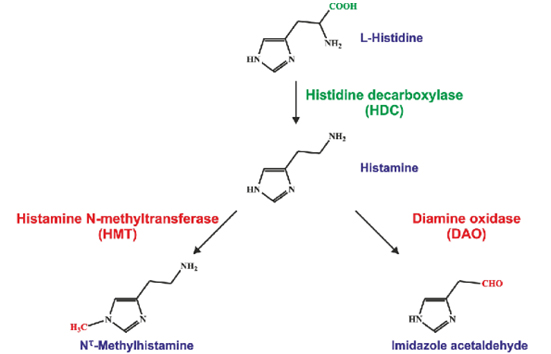
Figure 1. Formation and inactivation of histamine in the body's immune cells [2]
Histamine can exist naturally in many foods, especially those produced by fermentation, such as fish and fishery products (Figure 2). In addition, foods that are not stored properly or are contaminated can also contain histamine [3].
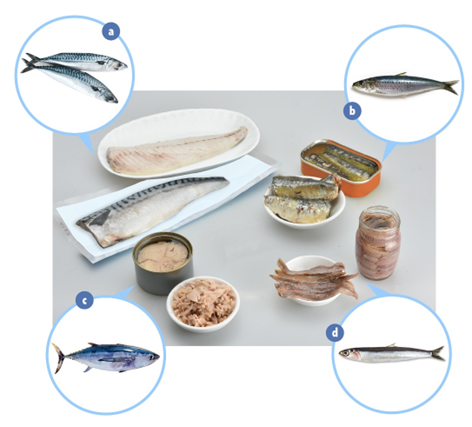
Figure 2. Some foods which contain histamine:
(a) mackerel, (b) sardines, (c) tuna and (d) anchovies [4]
Histamine in foods is often created through fermentation, in which bacteria or yeast use histidine to produce histamine as a minor product. This often occurs in foods such as salmon, tuna, and cheese.
2. Symptoms of histamine poisoning from food
The human body có thể accepts một histamine content nhất định without causing any reaction because histamine is broken down by endogenous enzymes (Figure 1). Only when the histamine content in food is too high or the endogenous enzyme that decomposes histamine in the body is inhibited, histamine potentially cause toxicity. Histamine recognition receptors are present in many target organs in the body, so hypersensitivity will occur all over the body (Figure 3).
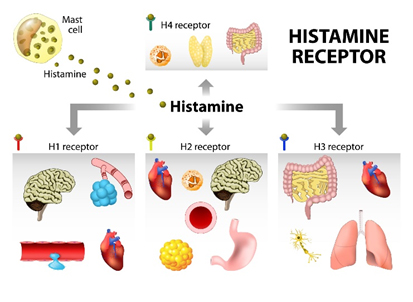
Figure 3. Histamine recognition receptors are present in many target organs in the body
Compared to livestock and poultry meat, fish meat has lower mechanical strength and is susceptible to microbial contamination. Histamine is formed by growing microorganisms that produce enzymes and convert histidine into histamine in fish, among which the bacteria Morganella morganii is the species most capable of producing histamine.
Histamine has heat-resistant properties and is not destroyed even when cooked. Therefore, if a food contains high amounts of histamine, it is still not lost during the heat process. Histamine toxicity depends on the total amount of histamine in the diet. If the intake is from 8 mg - 40 mg of histamine, sensitive people will experience tears and saliva; if the intake is from 1,500 mg - 4,000 mg, the person eating will have symptoms such as headache, stomachache, diarrhea, rapid pulse, difficulty breathing, rash...
Clinical symptoms usually occur quickly from one to several hours after eating, specifically including:
- Red face, red eyes.
- Difficulty breathing due to edema and tracheal spasm.
- Red, itchy rash, possibly skin rash.
- Burning sensation in the mouth, increased salivation, stimulates gastric secretion, causing nausea, vomiting, and diarrhea.
- Fast pulse, low blood pressure due to vasodilation.
- Can directly affect the nervous system, causing symptoms of nausea, dizziness, headaches... [1]
3. Situation of poisoning due to histamine from food and current regulations
From 2020 to June 2024, the National Institute for Food Control recorded a number of cases of poisoning due to histamine in food from localities, typically as follows:
In April 2022, according to a report from the Food Safety and Hygiene Department of Thua Thien Hue province about a suspected food poisoning case involving four construction workers, after eating for five minutes, all symptoms appeared: red face and whole body, dizziness, lightheadedness, headache, loose stools, difficulty breathing and was taken to the hospital. Analysis results of the National Institute for Food Control showed that in the meal, tuna samples detected a histamine content of 425 mg/kg.
In May 2024, according to a report from the Food Safety and Hygiene Department of Nghe An province, a suspected food poisoning incident at a collective kitchen caused 71/1,416 people to be hospitalized with red faces, rapid heartbeat, and pain. headache, hypertension, nausea, and scattered red rash. Analysis results of the National Institute for Control showed that in a collective meal, a sample of fried silverback fish detected a histamine content of 739 mg/kg.
Regulation of histamine content in foods is often determined to ensure food safety and prevent the risk of histamine poisoning. However, these regulations may vary between countries and within Vietnam.
The Expert Committee of the Food and Agriculture Organization/World Health Organization (FAO/WHO) has identified the public health risk of histamine with the no-observed-adverse-effect level (NOAEL) to be 50 mg in total consumption. Based on a maximum serving size of 250 g of seafood, the maximum safe level of histamine is 200 mg/kg, equivalent to 200 ppm [5].
The United States Food and Drug Administration (FDA) has reduced the histamine content level in tuna products safe level of 50 ppm to 35 ppm (mg/kg) since 2020. If histamine is detected in many other fishery products at levels equal to or higher than 200 ppm, the FDA considers it a toxic product and will conduct a recall [3].
European Commission (EU) Document No. 1019/2013 of 23 October 2013 amending Annex I to Regulation (EC) No. 2073/2005 relating to the maximum limit for histamine in fishery products as fish sauce produced by fermentation 200 mg/kg, other fishery products processed with enzymes in brine, produced from fish species with high histidine content would be 400 mg/kg [6].
In Vietnam, TCVN 5289:2006 regulates the maximum allowable histamine content in frozen seafood products at 100 mg/kg.
Cases of histamine food poisoning in Vietnam have attracted the attention of health and government agencies, including stepped-up efforts to improve food quality control and public education. about safe food handling and storage.
4. Handling and preventing poisoning caused by histamine from food
4.1. Handling in case of histamine poisoning
Monitor early detection of patients showing symptoms of allergy after eating seafood products from one to several hours. Provide timely advice to patients to avoid causing psychological anxiety and panic. Quickly go to a medical facility for emergency treatment and timely treatment.
- Mild symptoms: skin allergies, digestive disorders
- Severe symptoms: rapid pulse, low blood pressure, exudate, difficulty breathing, the patient should be quickly resuscitated, and given emergency fluids and electrolytes, the patient should be transferred to the poison control department for examination and treatment [1].
4.2. Preventing poisoning due to histamine
(1) Propaganda, education, and dissemination of knowledge:
- For the community: in selecting, storing, and using food
Know how to select, prepare, and prepare food from fish hygienically and food-safely (stored at cold temperatures, fresh, firm, clear eyes, red gills, and blood is still visible when cut out; the fish's belly is still closed; the fish's fins are firmly attached to the body; the fish has a slight fishy smell and retains the characteristic gray color of the fish; washing and processing must ensure the prescribed temperature, cooked fish thoroughly...). Test results for histamine in seafood must be below 100 mg/kg. For people with allergies, it is recommended to be cautious when eating sea fish so as not to be allergic when eating.
- For fishermen and business people: on preservation in fishing, business, and consumption of fishery products:
Ensure cold temperatures during the process of catching, transporting, preserving, trading, and processing marine fish.
(2) Training and educating medical staff at all levels to improve the capacity of the medical system in diagnosing, giving first aid, and treating food poisoning due to foods containing high histamine content.
(3) Collective kitchens must fully comply with food hygiene and safety regulations to operate. Carry out three-step food inspection and save food samples according to regulations, especially when using ingredients made from frozen fish and seafood [1].
5. Propaganda activities to prevent poisoning caused by histamine from food
In recent years, the National Institute for Food Control has determined the cause of food poisoning related to histamine and participated in communication activities for grassroots health officials and people. To prevent histamine poisoning. With the desire to contribute to reducing cases of food poisoning caused by histamine in particular and natural toxins in general, the National Institute for Food Control regularly carries out investigation activities and determines the cause of food poisoning as well as communication to prevent poisoning. Communication activities to prevent histamine poisoning from food would help limit future poisoning cases. At the same time, timely testing results will help confirm the cause of poisoning and support doctors with the basis to propose quick and accurate poisoning treatment in cases of poisoning that have occurred.
The National Institute for Food Control is the highest-level food testing agency, directly under the Ministry of Health, established under Decision No.376/QD-TTg dated March 23, 2009 of the Prime Minister. The National Institute for Food Control is designated by the Ministry of Health, the Ministry of Agriculture and Rural Development, and the Ministry of Industry and Trade as a testing unit serving state management. The National Institute for Food Control is the national referee testing unit for food quality and safety. In addition to performing food testing tasks to serve state management according to its functions and tasks, the National Institute for Food Control provides food testing services for customers in need. With the leading food testing capacity in Vietnam, a laboratory with modern equipment, and a team of experienced staff and experts, the National Institute for Food Control is committed to providing customers with the best food testing service with the motto: honesty, dedication, accuracy, efficiency, and prestige.
Nguyen Thi Hong Ngoc
Laboratory of Food Toxicology and Allergens
National Institute for Food Control
References
[1] “Poisoning due to Histamine in marine fish.” Accessed: Jun. 10, 2024. [Online]. Available: https://vfa.gov.vn/tin-tuc/ngo-doc-do-histamine-trong-ca-bien.html
[2] H. Schwelberger and F. Sánchez-Jiménez, “Chapter 3 Histamine Metabolism,” 2013. Accessed: Jun. 10, 2024. [Online]. Available:https://www.semanticscholar.org/paper/Chapter-3-Histamine-Metabolism-Schwelberger-S%C3%A1nchez-Jim%C3%A9nez/5857874104f2caa135b32b4b298481c0ae76fee6
[3] O. of R. Affairs, “CPG Sec 540.525 DRAFT: Scombrotoxin (Histamine)-forming Fish and Fishery Products – Decomposition and Histamine (CPG 7108.24).” Accessed: Jun. 10, 2024. [Online]. Available: https://www.fda.gov/regulatory-information/search-fda-guidance-documents/cpg-sec-540525-draft-scombrotoxin-histamine-forming-fish-and-fishery-products-decomposition-and
[4] “Food Safety Express 77th Issue (September 2019).” Accessed: Jun. 10, 2024. [Online]. Available: https://www.cfs.gov.hk/english/multimedia/multimedia_pub/multimedia_pub_fse_201902.html
[5] WH Organization and F. and AO of the U. Nations, Joint FAO/WHO expert meeting on the public health risks of histamine and other biogenic amines from fish and fishery products: meeting report . World Health Organization, 2013. Accessed: Jun. 10, 2024. [Online]. Available: https://iris.who.int/handle/10665/89216
[6] Commission Regulation (EU) No 1019/2013 of 23 October 2013 amending Annex I to Regulation (EC) No 2073/2005 as regards histamine in fishery products Text with EEA relevance , vol. 282. 2013. Accessed: June. 10, 2024. [Online]. Available: http://data.europa.eu/eli/reg/2013/1019/oj/eng





